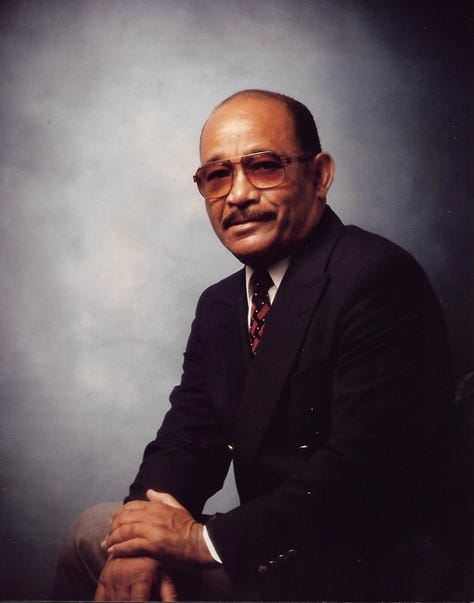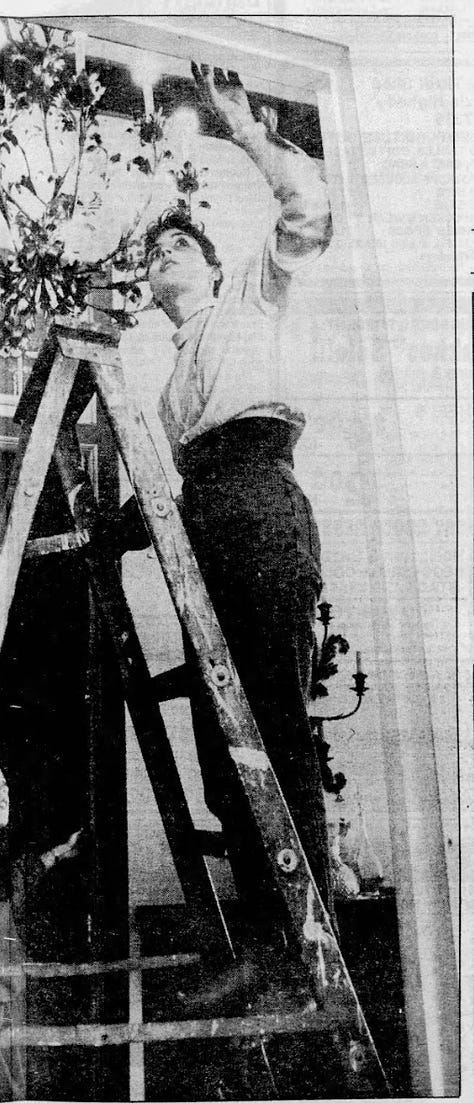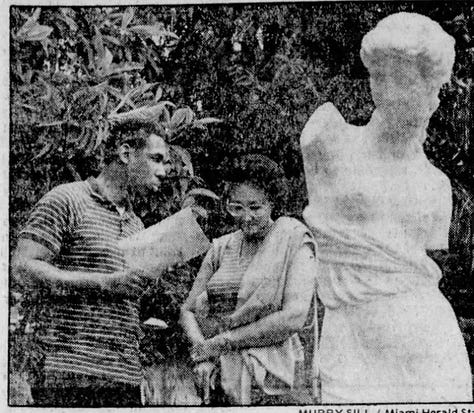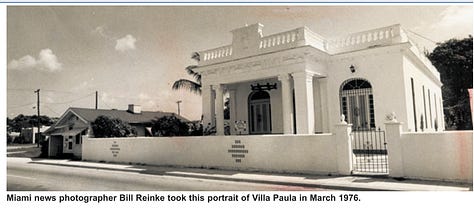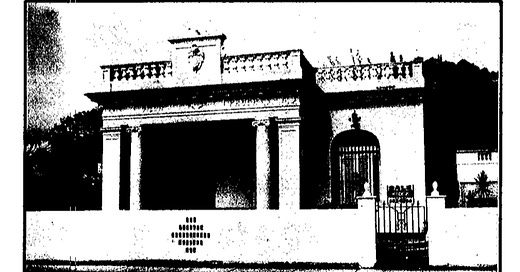The Past Lives of Villa Paula: The Haunting and Healing of the Haitian Hospital
By Jasmine Respess for The Dále News (Dále Zine) April 2025
Memory is a tricky thing, and history may be even more so. The story of Villa Paula, the Cuban Consulate, or the Haitian Hospital shifts depending on who you ask.
Akia Dorsainvil and I began looking into the Haitian hospital when we started working on a project about places in South Florida and their spiritual connections. While I am not a Florida transplant, I am from Cocoa Beach, I moved to Miami about five years ago. But I was unfamiliar with the story of the Haitian hospital in the center of Little Haiti.
“The story is that a woman died there,” Akia said. “I am not sure if she lost her baby or if she was looking for reproductive care and didn’t get it, but she jumped to her death at the hospital.”
With this small tale, we started our research. Akia contacted local historian Malcolm Laredo of The Greater Miami Bureau of Time Tourism. When Akia shared with me what Malcolm found, I was confused. All the newspaper articles, some from 1926 and others from the 70s and 80s, were about a Cuban architect named C. Freira, the various eccentric owners over the years, and a one-legged ghost named Paula. Seeing as Malcolm is a researcher by trade, I wondered how it was possible that none of these clippings tied back to the story of the Haitian hospital and the mother in distress.
Let’s go over what has been recorded. The property at 5811 N. Miami Ave was built in 1926 as the home of Cuban Consul Domingo J. Milord and his wife Paula Milord. According to news reports of the time, it cost $30,000 ($545,000 in today’s money) to construct. The structure was designed in neoclassical style by famous Cuban Architect Cayetano Freira, and the materials used were shipped from Havana. The contract to build it was awarded to J. Allan Turner of Miami. The home boasts 18-foot-high ceilings, a luscious garden, a gazebo, 10 rooms, two baths, and Tuscan columns. The home was named Villa Paula in honor of Mrs. Milord. Sadly, in 1932, shortly after the couple moved in, Paula died from complications after having her leg amputated at 61 years old.
In 1983, the City of Miami officially designated the structure historic. In 1987, there was a second designation, an amendment to the original to include the interior and an adjacent lot.
Now to the spooky stuff. There is said to be a handful of spirits who haunt the house, Paula Milord and her one leg is said to be one of them. Another is the spirit of an illegitimate infant born to a house servant, and a third is the mother looking for the grave of her baby. Is this the same Haitian woman who died at the hospital?
As history tells, U.S. and Cuban tensions rose during this time, so the home never fully served its purpose as a consulate. Muriel Reardon was the next owner of the home until she died in 1970. The house has had multiple owners and served many purposes, including a senior citizens’ home. By the mid 70s, the house had fallen into disrepair until Cliff Ensor bought it and fixed it up in 1974. Ensor stoked the paranormal flames, reporting sightings of a floating woman in a flowing gown and long black hair, flying silverware, and falling chandeliers. Ensor went as far as to hold seances and invite mediums and psychics to Villa Paula.
When Ensor decided to sell the house in the 80s, he had to overcome the scary reputation he had popularized. The Haitian residents who surrounded Villa Paula regarded the building with suspicious reverence, blessing themselves when passing or crossing the street to avoid it altogether. But I want to bring attention to Dr. Lucien Albert and the hospital he ran out of 5811 N. Miami Ave for almost 20 years.
After many false starts, Ensor sold the property to pediatrician Lucien Albert in 1986. Albert was a proclaimed skeptic, so when Terence Cantarella of Biscayne Times asked him about Paula Villa in 2008, he told them to contact the current owners and said, “They can tell you what you need to know.”
Dr. Albert sold the building to Marc Swedroe, a real estate investor and son of renowned Miami Beach architect Robert Swedroe, in 2003 (according to the New Miami Times, as late as 2018, Villa Paula was for sale for 4.5 million dollars).
Dr. Lucien Albert died in January of 2020 at 81 years old.
Being from a Black Caribbean family myself, Dr. Albert’s response sounded more like, “We don’t talk about that” than “I outright don’t believe.” Of course, this is conjecture, but then I think about the story. After decades, how did that legend get to Akia? And elders in Little Haiti backed it up.
Was this suffering woman from the Haitian hospital also the house servant (who was likely pregnant by the man of the house, or another man like him)? How did this version, where a woman took her life over either the grief of a child or her lack of personal agency, stay with the people of Little Haiti instead of the story of the well-stationed Cuban dignitary? Did Dr. Albert’s hospital recenter the story on maternity? On Blackness? Over those 17 years, I believe Dr. Lucien Albert’s pediatric practice healed more than it haunted, but this tale persists.
Zooming out, I see how these two stories could have come together through cross-cultural bricolage.
This old house is haunted…a woman died…there was a dark-haired woman…a woman was pregnant…a woman was wailing…a hospital was here…a woman stalks the halls
But then, why is Paula’s story the most prominent? Is it due to the social standing she held or the money she had? Is it easier to connect a scary story to something with a prolific, recorded history? Or is it because scandalous pregnancies, grieving women, class differences, and race relations are frightening to people in other ways?
Still, the parable of this Black woman, a patient at the Haitian hospital, whispers through Little Haiti during domino games, past porch steps, and over shared glasses of cool limonade.

